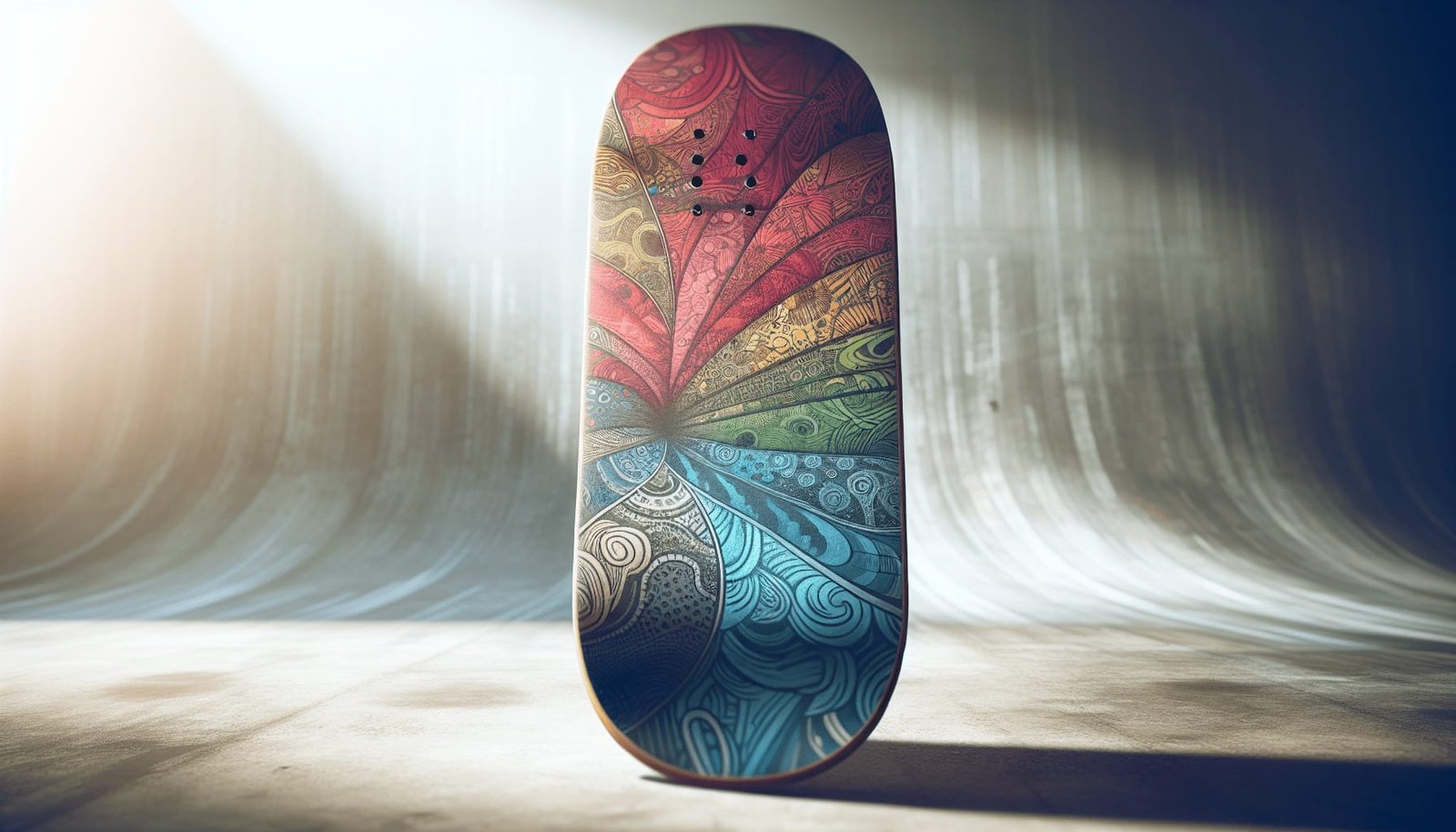Have you ever found yourself standing in a skate shop or browsing online, bewildered by the sheer variety of skateboard deck options available? When selecting the perfect skateboard deck, one of the critical considerations is the deck’s concave. But what exactly is deck concave, and how does it influence your ride? Understanding this can profoundly impact your skating experience, making it crucial to align the deck’s concave with your unique riding preferences.

What Is Skateboard Deck Concave?
At its core, concave refers to the shape of the skateboard deck from side to side. It’s the gentle curve that’s visible when you look at the deck from its nose to its tail. This curve is not just for aesthetics; it directly affects how your board feels underfoot and responds during tricks. Simply put, the concave is the profile that’s responsible for foot stability, balance, and board control.
Types of Concave
Understanding the types of concave is your first step toward choosing the ideal deck for your riding style. Let’s explore the common types:
Radial Concave: This is the most common type, featuring a medium, smooth arc. Its versatility makes it ideal for both street and park skating.
Progressive Concave: With a steeper curve than radial, this offers additional grip. It helps with more technical tricks and can enhance control.
W Concave: This style adds a curved “W” shape through the middle of the board. It boosts energy and enhances maneuverability, which can be beneficial for speed enthusiasts.
Flat Concave: As the name suggests, it’s flatter compared to other concaves. Perfect for riders who prefer cruising and have no need for aggressive tricks.
Asymmetrical Concave: Offering more curvature on one side, this design can help with carving and directional riding.
The Influence of Concave on Skateboarding
Once you grasp the options, it’s essential to understand why concave matters. The concave affects how you balance, flip, and control the board. A deeper concave could provide more grip for your feet, giving you confidence when attempting intricate tricks. In contrast, a flatter concave might allow for more relaxed riding, suitable for cruising around town.
Stability and Control
Different riding styles demand various levels of stability and control. If your style leans towards tricky ollies and kickflips, a steeper concave might be your friend. This shape permits quick foot placement changes, giving you the edge when executing swift maneuvers. On the other hand, if you enjoy smoother, flowy rides without the need for sharp turns, a gentler concave provides an easier, relaxed control.
Energy Transfer and Pop
Concave doesn’t just affect grip, but also how energy transfers through the board. A well-defined concave allows for better “pop,” which is crucial for jumps and tricks. This is why street skaters often gravitate towards decks with a higher concave—to achieve those perfect, high ollies.
Choosing Concave Based on Riding Style
Deciding on the right concave often depends on your preferred skating style. The kind of terrain you enjoy, whether it’s a street, park, or ramps, can influence your choice significantly.
Street Skating
Street skaters typically require a board that delivers precision and control. This makes a medium to deep concave suitable for ensuring grip and facilitating technical tricks. Progressive concaves can be beneficial in street settings, helping you land tricks with confidence.
Park and Ramp Riding
For park and ramp enthusiasts, choosing the correct concave is about finding a balance between control and ease of turning. Radial or W concaves are often excellent choices for park scenarios, allowing for smooth turns and maintaining speed.
Cruising
For cruising and casual rides, a flat concave setup offers comfort and ease of use. As tricks are not the main concern here, the need for a defined concave decreases, leaving riders free to enjoy a smooth ride.
Material and Construction: Does It Matter?
While the shape and concave of a deck are essential, the material and construction method can also impact your riding experience. Most skateboard decks are made from seven plies of maple wood, which offers a perfect balance between strength, flexibility, and weight.
Impact of Material on Concave
Sometimes, different materials and construction techniques can offer additional resistance or flex to the skateboard deck. Innovative techniques include layering carbon fiber, which can affect the deck’s responsiveness and rigidity. While this may not change the concave itself, it influences how the board reacts under stress, which can be crucial for high-impact skateboarding.

Factors to Consider for Personal Preference
The choice might still feel overwhelming, but considering personal factors can further streamline your decision process.
Foot Size and Weight
Your physical attributes, such as foot size and weight, can play a role in what will feel comfortable. Larger foot sizes might benefit from a wider and less concave deck to allow ample space for foot positioning. Conversely, smaller feet may find narrower, more concave decks to be more responsive.
Experience Level
New skaters might prefer more stable, flatter concaves that offer a stable platform for learning. As skills develop, experimenting with deeper concaves can help achieve more technical tricks.
Environmental Factors
Lastly, consider the environment where you’ll be skating most often. If you live in a hilly area, a board with significant concave can offer more control on declines, while a flat, wide deck might be ideal for leisurely cruises on flat, paved paths.
Making the Decision
Armed with knowledge, the next step is to get hands-on. Visit a local skate shop to stand on different concave decks. Feel the board under your feet and see how different concaves respond. Don’t hesitate to ask for advice from staff or other skaters. Real-world feedback can provide insights beyond what’s written in guides.
Try Before Committing
If possible, borrow decks from friends or other skaters to get a real feel before purchasing. Online reviews and community forums can also be great resources to understand how specific decks perform in various conditions.

Summary of Steps
To give a clear guide, consider this summary:
| Step | Action |
|---|---|
| Understand Concave | Learn about different concave styles: radial, progressive, W, flat, asymmetrical. |
| Assess Your Style | Identify whether you lean towards street skating, park riding, or cruising. |
| Match Concave | Choose a concave that aligns with your style: deeper for tricks, flatter for cruising. |
| Consider Material | Look into different deck materials and how they might affect ride and durability. |
| Evaluate Physically | Stand on different boards at a local shop to feel how different concaves respond. |
| Get Advice | Ask for recommendations and read reviews. |
Conclusion
Choosing the right skateboard deck concave is a personalized journey, influenced by your unique experience, preferences, and goals. Embrace the process as it not only enhances your skating but deepens your understanding of skateboard dynamics. With the right concave, your board will not only complement your current skills but inspire you to reach new heights in your skateboarding journey.

